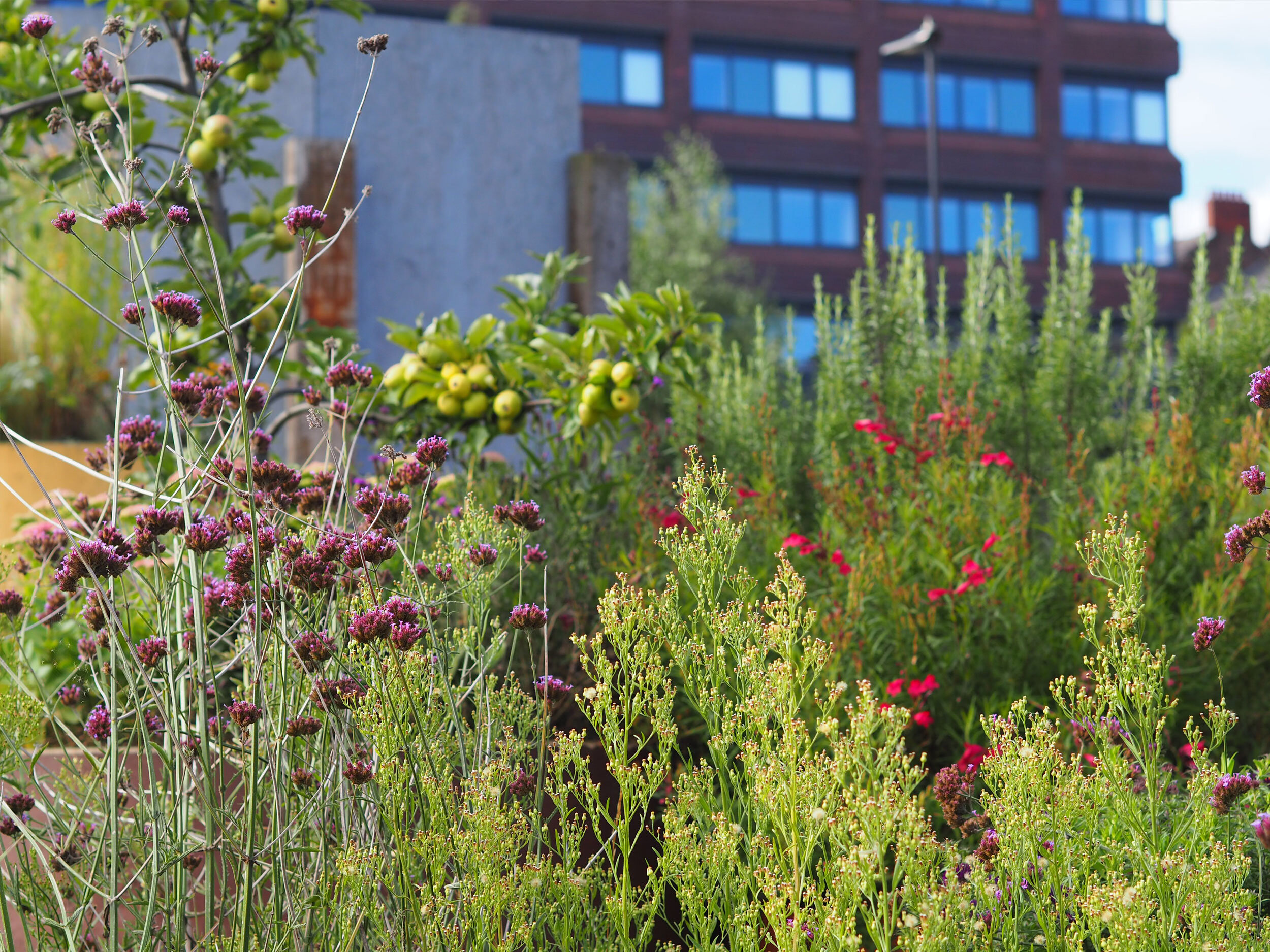
Designed with climate change and wellbeing in mind
Grey to Green makes a positive contribution to urban biodiversity in Sheffield. It helps nature to thrive in the city centre. The project creates a sustainable environment where a diversity of insects can feed, roam and shelter. This in turn benefits the wider ecosystem, the food chain, and our way of life.
Encouraging insects to thrive can have wide-reaching positive effects on the ecosystem. That’s why Grey to Green has installed a range of habitat shelter sculptures in the city centre. The sculptures provide nesting and hibernation space for the likes of ladybirds, lacewings, bees and wasps. When they move on, these beneficial insects give back in significant ways. Solitary bees and wasps (meaning they're not part of a hive, and are non-stinging) play vital ecological roles. Solitary bees are prolific pollinators, and solitary wasps are essential predators of plant-eating insects. Lacewings, meanwhile, act as natural pest controllers. They've earned the nickname ‘gardener’s friends’ for the vast numbers of aphids they eat.
Grey to Green keeps in mind all the living things that call the city home. As well as forming new footpaths and cycleways, it creates safe green routes for wildlife too. The project expands on Sheffield’s wonderful natural network of rivers. It enables new ways for birds, bats and insects to move about within the city centre. And birds, like all creatures, need a place to nest and find food. Here, some of the UK’s 600 species of birds may nest and raise their young in bird boxes within the habitat sculptures.
The planting and soil used in Grey to Green are also designed to encourage all kinds of creatures, as well as plants, to flourish. Multi-layered planting here helps to protect people and wildlife from air pollution. It also reduces carbon emissions in the atmosphere. At the same time, special flowerbeds have been shown to capture pollutants – oils, heavy metals and microplastics – from the road. This innovation helps to keep contaminants from flowing into the drainage system and River Don, protecting the biodiversity of the river’s habitat. It creates a flower-rich landscape too – ideal for pollinators that rely on pollen and nectar. Flowers are essential to the survival of bumblebees and, in turn, to our whole food chain. One in every three mouthfuls of food we eat depends on the pollinating work of bees. The project’s soil, meanwhile, is a mix of local recycled material. It's low-fertility and free draining, so unattractive to unwanted weeds but ideal for drought-tolerant species.
Grey to Green brings nature, and all the benefits it offers, right into the heart of Sheffield and Phase 2 shows a 561% increase in biodiversity value when assessed using the BREEAM calculator. In doing so, it enhances the sense of connection between the city centre and the natural environments beyond. Biodiversity is essential to our way of life, and plants, birds, insects and people can prosper here – and support one another to prosper. Through Grey to Green, Sheffield’s urban natural world is enhanced for all its occupants – human and otherwise.



